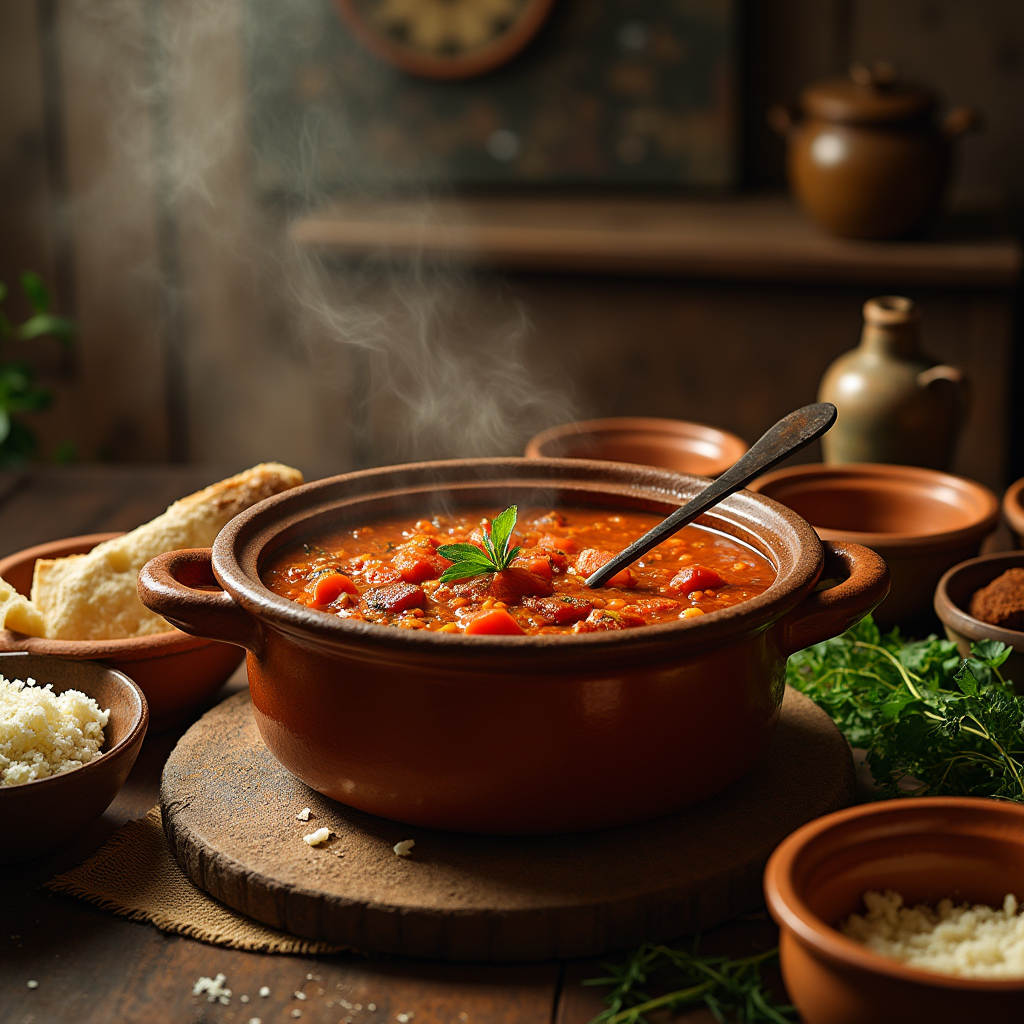
Dating back to ancient Rome, the Minestrone represents the heart of Italian cooking philosophy – using simple, seasonal ingredients to create something extraordinary. The word “minestrone” comes from the Latin “ministrare,” meaning “to serve,” and this soup truly serves as a complete meal in a bowl.
| Ingredient | Amount |
|---|---|
| Mixed Vegetables | 1 cup |
| Pasta/Rice | 1/4 cup |
| Beans | 1/4 cup |
| Broth | 2 cups |
| Parmesan | 1 oz |
| Ingredient | Amount |
|---|---|
| Mixed Vegetables | 2 cups |
| Pasta/Rice | 1/2 cup |
| Beans | 1/2 cup |
| Broth | 4 cups |
| Parmesan | 2 oz |
| Ingredient | Amount |
|---|---|
| Mixed Vegetables | 4 cups |
| Pasta/Rice | 1 cup |
| Beans | 1 cup |
| Broth | 8 cups |
| Parmesan | 4 oz |
The beauty of Minestrone lies in its adaptability. Traditionally, it was made with whatever vegetables were in season or available in the garden. This flexibility means there’s no single “correct” recipe – instead, the soup changes with the seasons, reflecting the natural rhythm of Italian cooking.
| Nutrient | Amount |
|---|---|
| Calories | 285 |
| Protein | 12g |
| Carbohydrates | 45g |
| Fiber | 8g |
| Fat | 9g |
Yes, but add pasta just before serving to prevent it from becoming too soft. The soup actually improves after a day as flavors develop.
Traditionally, it can include pancetta or prosciutto for flavor, but vegetarian versions are equally authentic and delicious.
Small shapes like ditalini, small shells, or broken spaghetti work well. They should be proportional to the vegetables.
Yes, but freeze without the pasta and add fresh pasta when reheating to maintain proper texture.
Share your Minestrone creations using #AuthenticMinestrone – and remember, the best Minestrone is the one made with love and fresh, seasonal ingredients! 🇮🇹✨